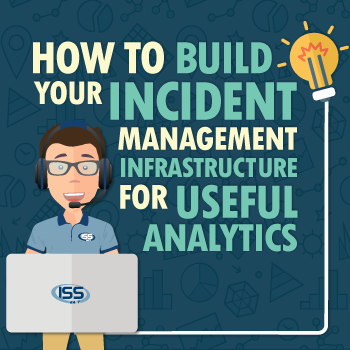You stare at your computer frustrated.
The numbers from last night’s event do not add up. Your report shows twelve ejections.
You always keep your ear close to the radio and your eyes on email. You can only remember six ejections.
“What is going on here,” you ask yourself. You know something is wrong, but cannot seem to put your finger on the issue.
All of the reports are showing what appears to be incorrect figures. You immediately blame your team for the discrepancies.
Upset, you yell for your operations coordinator. “Chris, please come here,” you demand. He hesitantly shuffles into your office.
“What’s with these numbers,” you ask him. He walks around your desk to see what the concern is.
He agrees that there are inaccuracies in your data. He also points out that each figure is doubled. “Everything must’ve been reported twice,” he informs.
But, Chris reads the 24/7 Software blog incessantly, so he knows how to fix this problem. “We need Proactive Operations,” he proclaims.
You give him a blank look as he continues. “Proactive Operations is how operations like ours achieve maximum performance using strategy, infrastructure, and technology. We have the strategy and technology in place, but our infrastructure is weak and disorganized.”
“OK, what needs to be done,” you ask. He takes over your computer, and while he finds this article he explains, “Our data is being duplicated because there is not a streamlined flow of information during events.”
“All departments are logging anything they are aware of because they probably believe it will get missed by another department. The Operations team is logging housekeeping issues, and Maintenance is logging ejections that take place in the back-of-house,” he continues.
He shows you the infographic we created below that outlines how to build your incident management infrastructure. It helps you organize your departments for organized and efficient communication that results in communicating and capturing accurate data. This data leads to useful analytics used to improve your operation.

Share this Image On Your Site (copy code below):
Over to You
Ideally, your infrastructure is formulated prior to implementing technology. But, if you have to fill in the gaps, this infographic will give you what you need.
Build your infrastructure to ensure that you can achieve Proactive Operations at your property. It will give you the analytics you need to move past reactive improvement and into long-term optimization.


![You Need a Unified Solution (Not Individual Tools) [Infographic]](https://www.247software.com/hs-fs/hubfs/350x350-9.png?width=960&length=960&name=350x350-9.png)
![How Incident Management Systems Help Reduce Response Times [Infographic]](https://www.247software.com/hs-fs/hubfs/Infographic-350x350.png?width=960&length=960&name=Infographic-350x350.png)
![Ultimate Guide to Choosing an Incident Management System [Infographic]](https://www.247software.com/hs-fs/hubfs/350%20x%20350%20%28New%29.png?width=960&length=960&name=350%20x%20350%20%28New%29.png)